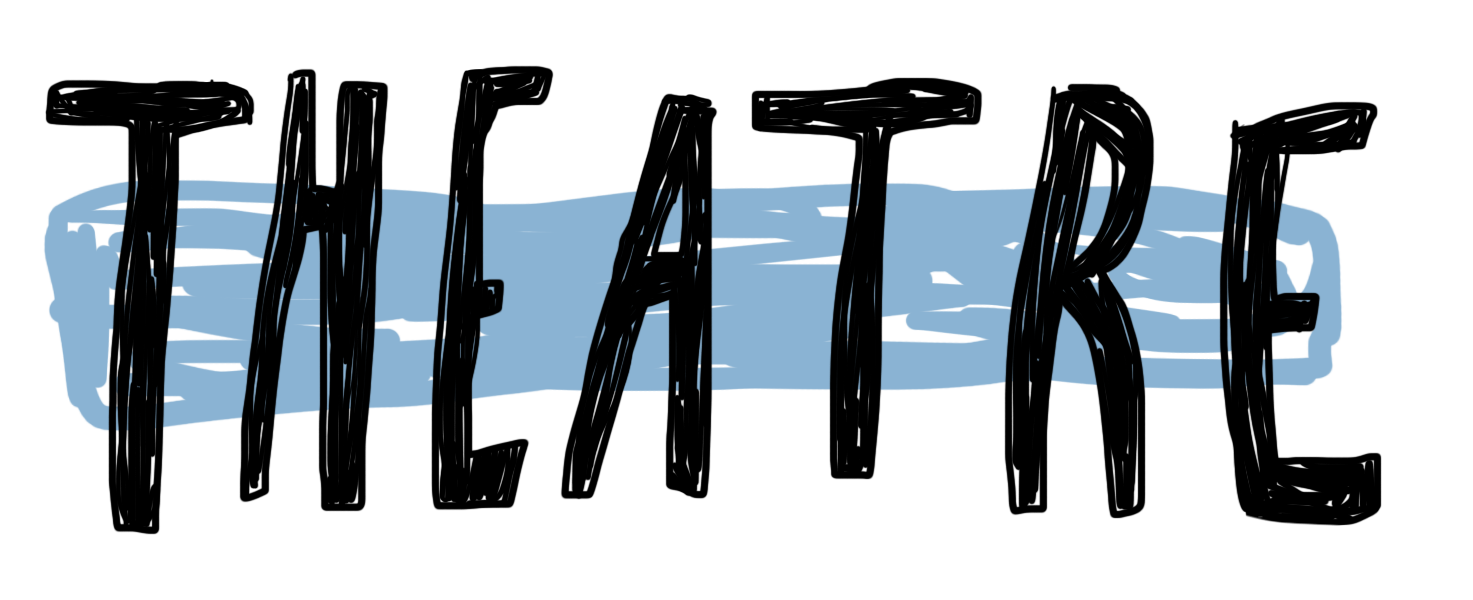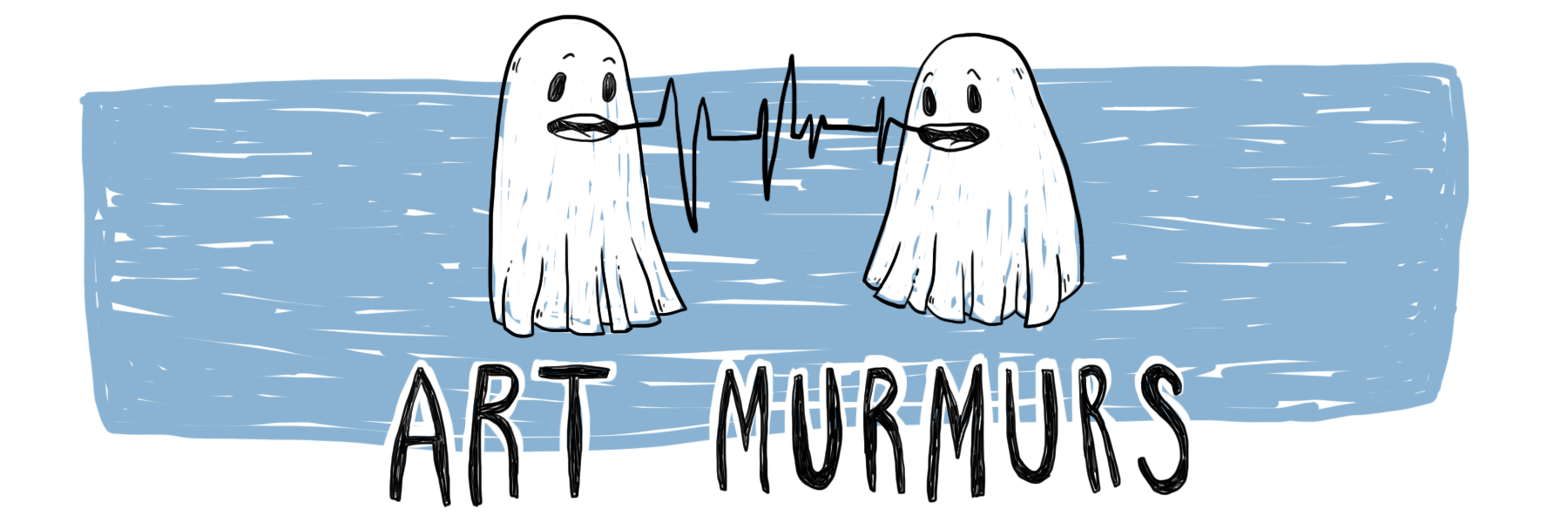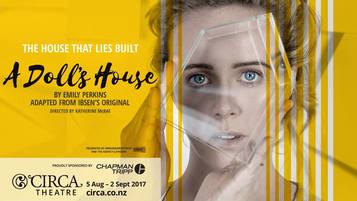Corey Spence
Perkins’ script pummels the assumed power hierarchy of domestic life into pieces. In a time where such ridiculousness like the the media continuously questioning new Labour leader Jacinda Ardern about “career or kids?” (because, of course, the answer makes her more or less suitable for her position) continues to occur day-by-day for women, there couldn’t be a more perfect climate to present this show. The contrast she creates with Nora and Theo (Arthur Meek) is one of her most effective methods. The former starts as the ‘perfect housewife’: stay-at-home mum, managing the housework, caring for the kids, and adopting her husband’s political beliefs. The latter is oblivious of his privilege. The cleverness of Perkin’s script lies in how she takes a character many audience members might know, and may even admire in some ways, and slowly shows how many advantages he has compared to the women around him. Ian Harman’s intricate, architectural set design, made of ladders, timber, and wooden chairs, helps to show the audience that Theo owns the space. It makes a statement about the balance of domestic power in the play before it even begins. And so, it’s incredibly gratifying to watch how Perkins’ script develops the two characters – as Nora begins to find herself and starts to realise she has to care about herself just as much as she cares about everyone else, Theo stinks deeper into his chauvinistic abyss. And when Nora finally puts herself first, the entire audience is rallying behind her, literally. In bringing A Doll’s House to the contemporary, Perkins hardens Nora’s voice, allowing the audience to take even more of a stand with her.
McRae keeps the stage highly active, even during the more conversational segments, which keeps the audience absorbed in the action. This is largely due to the distinct characterisation. Hambleton’s Nora is skittish and over-excitable, darting across the stage, smile firmly planted on her face even when shit’s hitting the fan. In contrast, Kopae physicalises friend-of-the-family Christine’s inner power and strength. There’s a perseverance in the way Kopae holds herself on stage; Christine never slouches, never droops, but always stands tall, no matter what the character is going through. When straight-up challenged for a job, Christine leans forward in her seat, taking the initiative: “I will fucking eat you; I will fight you like a motherfucker.” Harman’s costume design adds to the contrast between Christine and Nora: it examines the different choices the pair have made through their lives and emphasises how the two should (and do) learn from one another, becoming more like the other in the end. Nora gains the confidence and independence of Christine (reinforced through Christine’s well-kempt business attire), and Christine gains the gentleness and considerateness of Nora (highlighted by her flowing sundresses). The stage is also never static because of the stark character contrasts. To use the most direct pairs: Nora can never sit or stand still for more than five seconds and Theo is unwavering; Christine’s direct, pointed, and sometimes abrasive, where Aidan (Francis Biggs) lurks in the background, always putting one step wrong.
While the show’s rhythm is relatively consistent and engaging, with scenes of differing lengths that vary from intense to cheerful to unfortunate to hilarious, there are times where the show slackens or pauses. The biggest dampener is the final argument between Nora and Theo. While the argument itself keeps the audience thoroughly engaged and Theo’s ludicrous and often sexist statements elicit gasps and anger his audience and Nora, the scene sits at a constant speed. It feels stretched beyond what it should be because of how intense the pair become in the argument – it then becomes difficult for the energy to rise as the argument grows more severe because the argument starts at its peak.
What this scene does do, not helped by the jagged and elongated pacing, is display Theo’s true colours. Theo spends the play as well-meaning, even in some of his more sexist moments, and it’s the fact he’s oblivious to his institutionalised sexism that helps demonstrate how sexism and misogyny still exists in even liberal contexts. But here, in this argument, one lie from Nora is all it takes for his hateful venom to emerge: he spits disgusting language at her and tries to demonise her to the audience. Perkins’ script again treads this embedded sexism cleverly, as Theo wouldn’t resort to insults like “bitch” and “cunt” if Nora was a man. It’s here we learn about all the decisions Nora’s made for the sake of everyone else, and how her entire life has revolved around Theo and her children because it’s what was expected of her. We understand why she’s jumpy and cheerful and “not happy”, and watching this realisation, where Nora acknowledges that she’s not as happy as everyone (including she herself) thinks is a beautiful and chilling moment. Hambleton is never stiller; you can see each fibre of her body, each muscle in her face making that realisation before she makes her last yet momentous choice in the play.
The lighting design, courtesy of Marcus McShane, burnishes the stage and characters in pale sepia tones. Though, this doesn’t mean the lighting doesn’t bloom at points of intensity. Warm oranges and deep reds seep into the colour scheme when Nora’s secret risks exposure, and the lighting after her argument with Theo gives a sense of rebirth as she parts from him, ready to start from scratch. However, the sound design (Pete Edge) doesn’t really offer much to the plate. Little of the ambient sound gives us a sense of time or place, and the show relies on the same exact tune for all its transitions, which quickly grows tiresome. Since we’re hearing the exact same sound of the exact same length every time a scene changes, the rhythm starts suffering part way through and we grow bored of the repetition.
A Doll’s House is beautiful, boisterous, and bolstering. It’s fantastic to see a production spearheaded by women, about the subjugation of women, and especially in a political climate where there’s risk of gender roles, the ‘role’ in life one must play based on their gender, re-emerging as the norm. More than being political, more than being relevant, it stands tall on the merits of its talented cast and vibrant script alone, creating an experience that audiences can gain insight from while thoroughly enjoying what they watch.
You can find out more about A Doll’s House at Circa Theatre’s website, where you can also book tickets; the show runs until Saturday 2 September.






